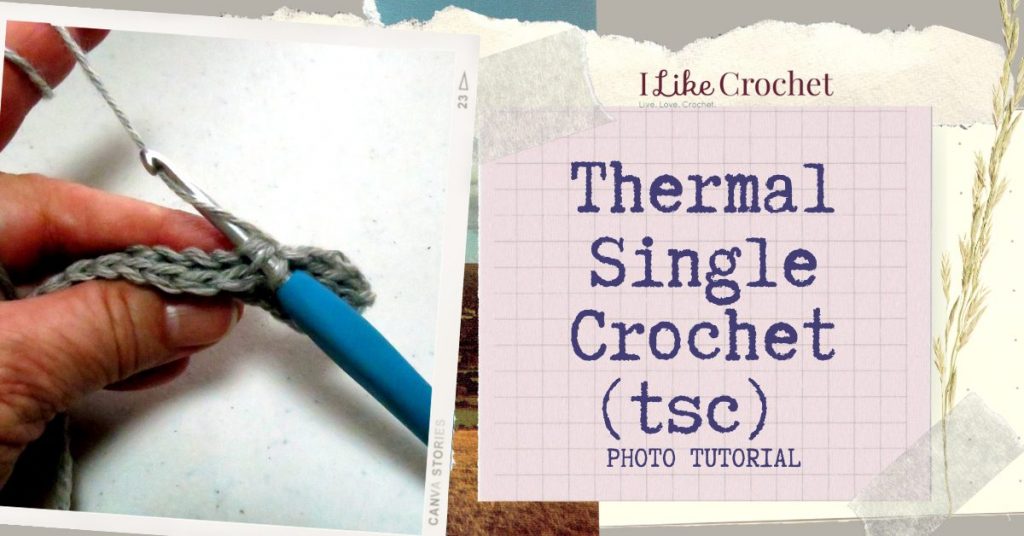
You can use this stitch for almost any project that will benefit from the thickness and extra cushioning. Use it to make soles for crocheted slippers that will last longer and be softer or for super thick potholders that will give you extra protection from hot pans. Or even amigurumi projects – the double thickness of the crochet fabric ensures that you can stuff your piece full without it showing through or pulling out.
Follow these steps to learn the stitch. You’ll have a reusable makeup remover pad when you’ve finished!
One tip – count your stitches or use a stitch marker to mark the first st of each row. The fabric likes to scrunch down and can sometimes be difficult to see on the return trip.
How to Create the Thermal Single Crochet Stitch
Base Row: Start with a row of either 10 foundation single crochet, or make a chain of 11 and then work a row of single crochet into the chain, ch 1, turn.
Row 1: Work a single crochet into the back loop of each stitch across to end of row, ch 1, turn.
Row 2: On this row you will work into the back loop again but you will also put your hook through the leftover loop of the stitch directly below the one you’re working on, yarn over and pull the loop up to the level of the row you’re now doing, finish as a regular single crochet. Repeat across to end of row, ch 1, turn.
Row 3 and beyond: Repeat Row 2 until the piece is as big as you want it.
When you are ready to finish off the piece, work the single crochets in the last row through both loops of the current row and the leftover loop of the row below. This gives the piece a sturdy edge rather than having a row with those leftover loops hanging out there.
After finishing the first row working in the back loop only, ready to turn.
After working 1 row of tsc, you can see the loops left from working in back loop only.
Looking down at the top of the previous row you can see the tops of the stitched you just completed as well as the loops left over from the previous row.
Hook is through the back loop AND the loop left over from the stitch immediately below; ready to yarn over and pull through.
Thermal single crochet stitch increases and decreases are worked the same way you would work regular single crochet increases and decreases. The only difference is that your hook will go through the leftover loop from the previous row and the current stitch (or stitches) as directed by the pattern.
This stitch is used to make the Early Frost Mittens! Check out this pattern and make your own mittens in a tight thermal stitch for maximum warmth.




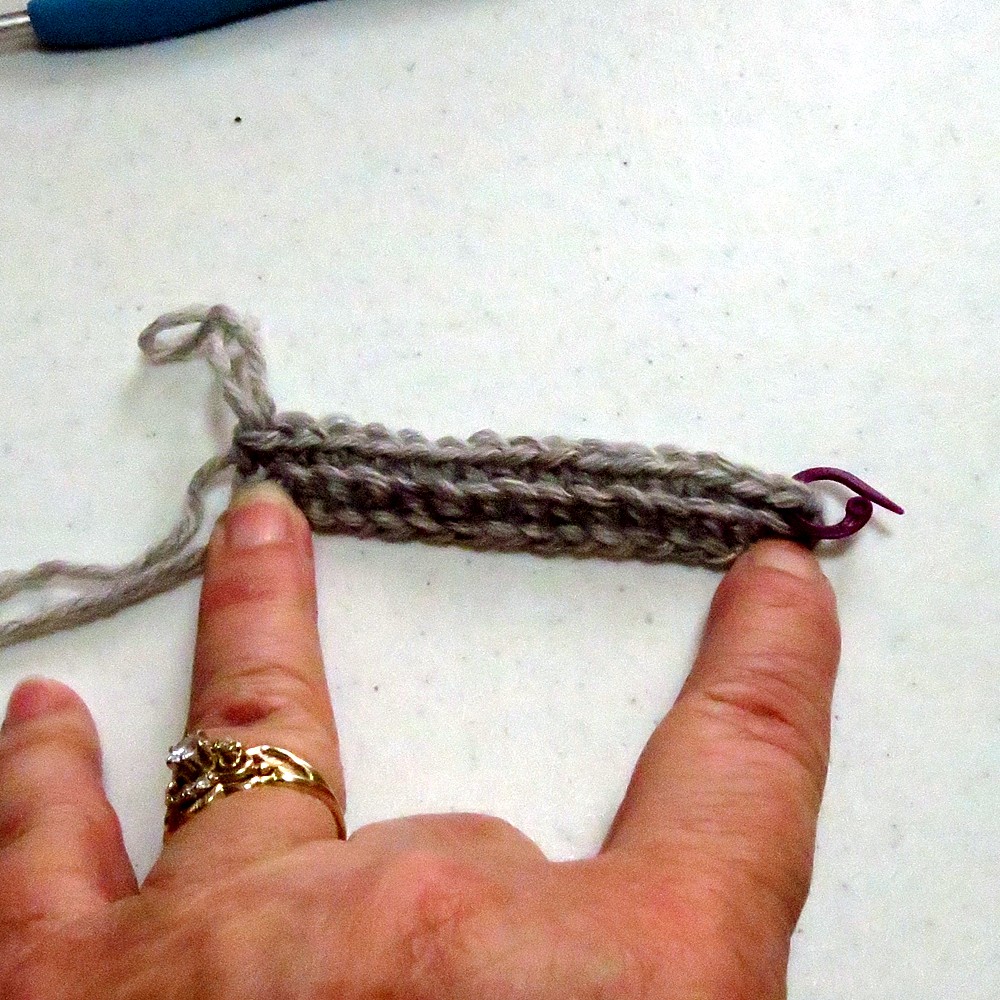
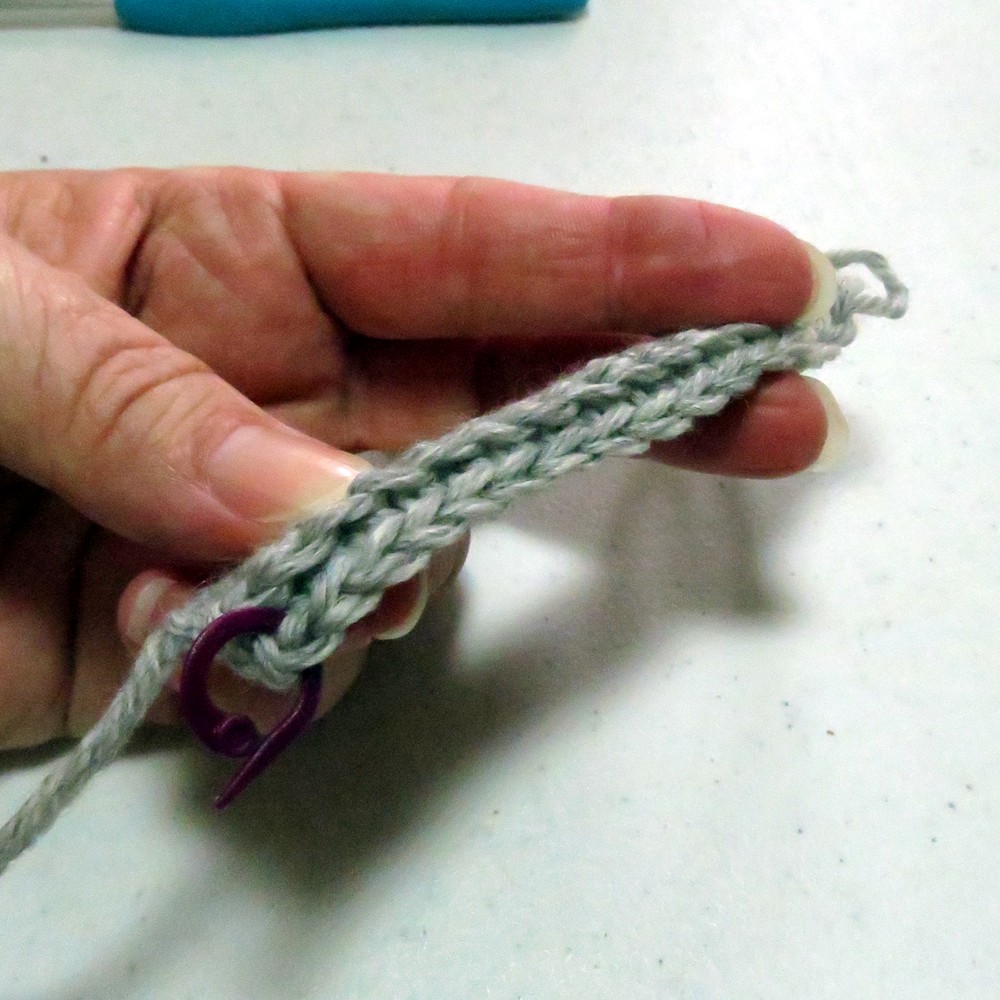
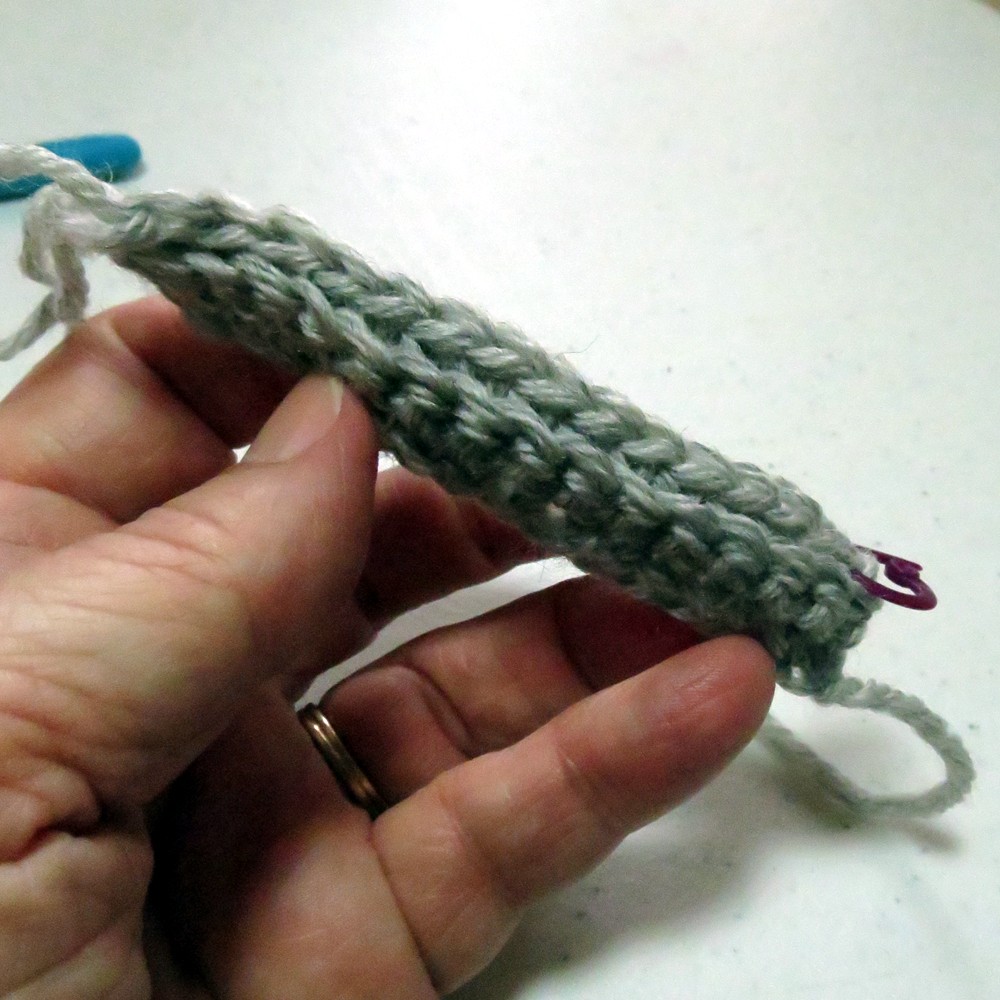
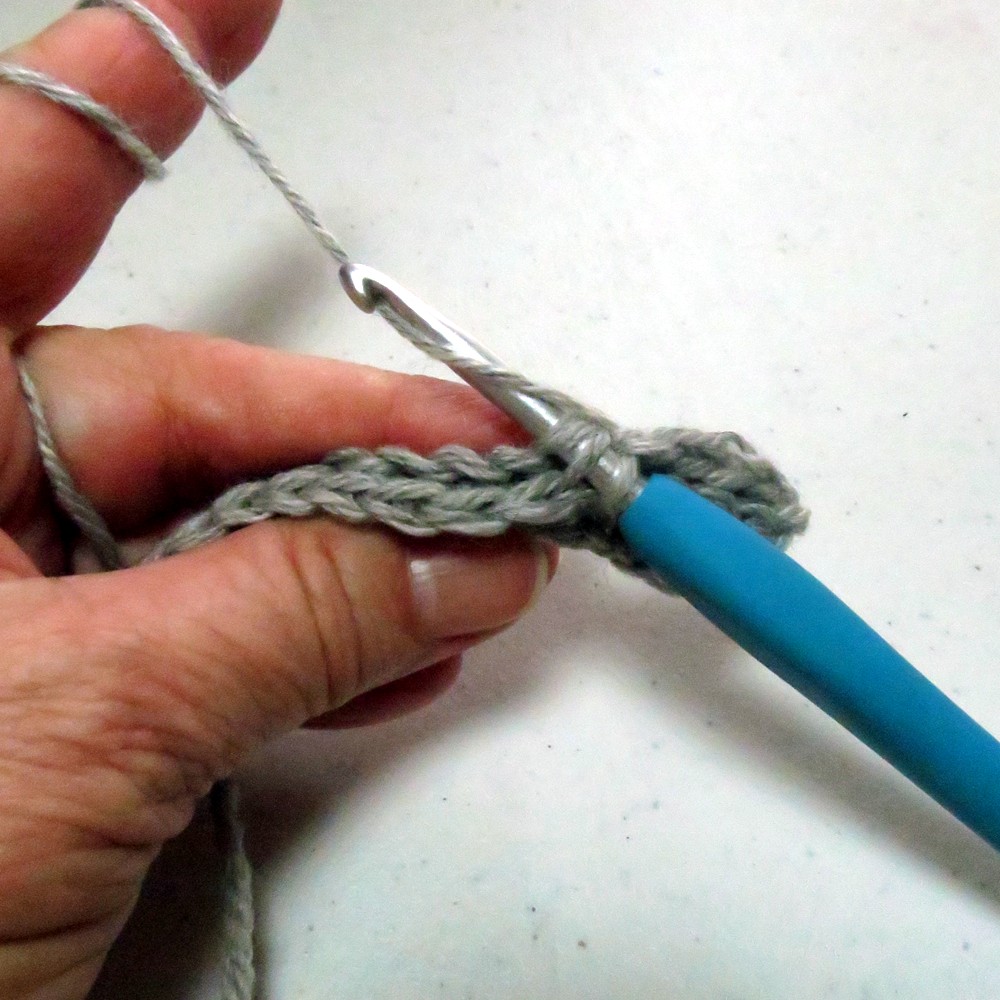
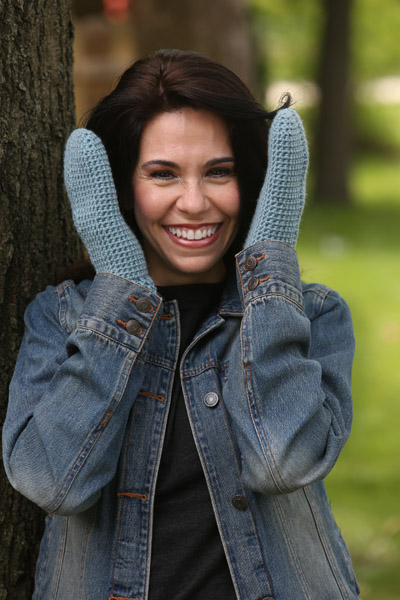
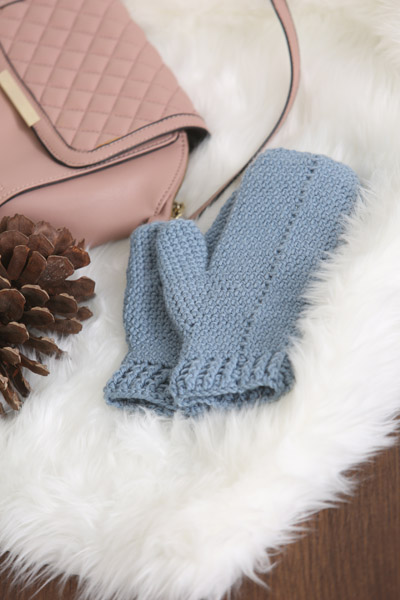
I’ve been crocheting for more than 60 years and finally you taught me a new stitch
I thought this was an ancient family secret passed down, as I learned it from my great grandmother and had never seen it in a magazine. Imagine my surprise (and disappointment, kinda) when I saw a pattern for it on Pinterest a few years ago.
This is new to me. This stitch would be great for the water bottle handle pattern I have made. I have used previously a pattern that touts it won’t stretch. But I’m going to try this thermal stitch the next time my granddaughter wears out her water bottle holder.
I learned this stitch in 1975 in Arizona. At the time my teacher, aged 42 years at that time, called it Double Single Crochet. She learned it as a child of 9 from her Grandmother. Her Grandmother had learned it from her Grandmother. This leads back Many Many years. I love it & use it often for pot holders & hot pads & other projects. Cotton yarn is best , but do not dry in the dryer. It will shrink.
Never heard of the tsc, keen to try it though. I’ve usually used hdc for it’s better insulation quality, but will give tsc a go.
Would be alright on small projects but I could see it a challenge on the wrists for larger projects.
I use the thermal stitch all the time for hot pads with 100% cotton yarn. They are great.
Can you apply this technique to other patterns, such as a simple hat, to make it warmer?
Yes, I believe so! – Nicola, Editor
I have used this stitch for hot pads…it works very well. But be sure to use all cotton also so the yarn does not burn easily.
No, I haven’t but I am eager to try it.
This is new to me ! Thank you for sharing 🙂
It will be interesting on learning the thermal stitches.
this looks like an easy-to-learn stitch but can’t find any patterns except the mittens to use it for like dish clothes or pot holders ??
Make the foundation chain the width you would like your finished item to be, then follow the directions given. I think this stitch would be to thick for a washcloth and take too long to dry between uses, but it would make good hot pads and pot holders.
sounds quite interesting. going to try it. think I made a rug once with a similar technique.
I’ve never used or heard of this stitch. Thanks for teaching it. Def going to try it.
Has anyone tried this stitch for a lap blanket for an elderly person ?
I would think it may be too dense for a lap blanket. it would be warm though. Also, if you haven’t crocheted the thermal stitch before, it goes slowly and is hard on the hands after a while – at least that is my experience.
It makes a very dense fabric that might be too heavy on the lap. You can try with a hook a couple of sizes larger than the yarn calls for. That would make a cushy fabric that isn’t as dense.
I have made blankets with this stitch, using larger hooks. A really nice one can be made using a variegated yarn on one side and a matching solid yarn on the other side. The excess yarn from changing colors for each row makes a nice fringe.
I was wondering if this would make a good strap for a purse? Is it very stretchy? I am looking to change a strap and want something that won’t stretch out.
Hello! I’ve reached out to the designer for advice and she or I will reply as soon as possible. Thanks! – Nicola, Editor
From the designer: “Unless you crochet using fabric strips or some other fiber that doesn’t have any stretch (twine?), the strap would still stretch with this stitch. If you wanted the look of the crochet stitch, you could go ahead and make the strap and then line it with fabric (would need to be sewn to the underside of the strap). Depending on the purse itself, I’d probably replace the strap with vinyl, cork or even a chain.” Hope that helps!
Have you tried Tunisian crochet I have used that for straps. not stretchy but it can curl.
Cotton doesn’t stretch much
Yes it does! I’m currently making a thermal stitch backpack strap for my Lili bag ( outstanding crochet. Com) Much faster than the split single crochet.
I’m also using the thermal stitch for my Lili backpack! I’m finding it really doesn’t stretch that much and the edges are very neat.
I found what looks like a great tutorial to make straps. It’s on Youtube titled – How to Crochet a Basic Cord – https://www.youtube.com/watch?v=zd7N9hWUNqc. I haven’t used it yet, but it looks simple and effective.
Would this work well for a hot pad/pot holder? I’ve been making double-thick sc ones ‘in the round’. Do you think this stitch will be thick enough to make the equivalent of a double-sided single-crochet project?
Hello Jeannine! I’ve reached out to the designer for advice and she or I will reply as soon as possible. Thanks! – Nicola, Editor
From the designer: “If you use a thick cotton yarn, and crochet tightly, this stitch might work for a hot pad? I would probably test that theory by making a small square and compare it to the double-sided single-crochet though.” Hope that helps!
I’ve made all my hot pads for years. With cotten yarn and a size h hook.
Thanks for the tip, I will be making some soon! Now that I’m retired, I have time to get into my yarn stash.
Thank you for allowing me to copy your so easy step by step of the way for the
Thermal Crochet Stitch. Yours most sincerely, Betty Kingston .From an 84yr old lady living in a nursing home.
Mrs. Betty, keep on crocheting and stay healthy.
Yours,
Tina Roberts in Texas
Ms Betty,
Stay healthy and enjoy your yarn stash. Blessings,
Lisa T
That might make a great rug.
I think it would make a great change purse/clutch as wouldn’t have to line it.
Zis this called single crochet or does that go into front of the row? Margaret
Hi Margaret, this is different than traditional single crochet, if that is what you are asking. Let me know if you have additional questions! – Nicola, Editor